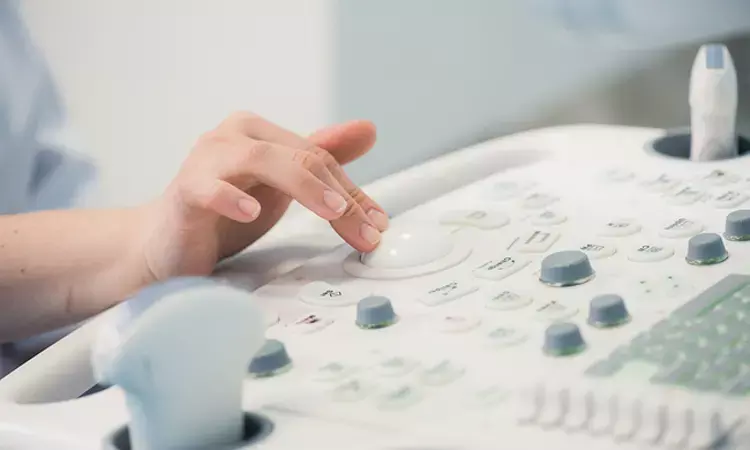- Home
- Medical news & Guidelines
- Anesthesiology
- Cardiology and CTVS
- Critical Care
- Dentistry
- Dermatology
- Diabetes and Endocrinology
- ENT
- Gastroenterology
- Medicine
- Nephrology
- Neurology
- Obstretics-Gynaecology
- Oncology
- Ophthalmology
- Orthopaedics
- Pediatrics-Neonatology
- Psychiatry
- Pulmonology
- Radiology
- Surgery
- Urology
- Laboratory Medicine
- Diet
- Nursing
- Paramedical
- Physiotherapy
- Health news
- Fact Check
- Bone Health Fact Check
- Brain Health Fact Check
- Cancer Related Fact Check
- Child Care Fact Check
- Dental and oral health fact check
- Diabetes and metabolic health fact check
- Diet and Nutrition Fact Check
- Eye and ENT Care Fact Check
- Fitness fact check
- Gut health fact check
- Heart health fact check
- Kidney health fact check
- Medical education fact check
- Men's health fact check
- Respiratory fact check
- Skin and hair care fact check
- Vaccine and Immunization fact check
- Women's health fact check
- AYUSH
- State News
- Andaman and Nicobar Islands
- Andhra Pradesh
- Arunachal Pradesh
- Assam
- Bihar
- Chandigarh
- Chattisgarh
- Dadra and Nagar Haveli
- Daman and Diu
- Delhi
- Goa
- Gujarat
- Haryana
- Himachal Pradesh
- Jammu & Kashmir
- Jharkhand
- Karnataka
- Kerala
- Ladakh
- Lakshadweep
- Madhya Pradesh
- Maharashtra
- Manipur
- Meghalaya
- Mizoram
- Nagaland
- Odisha
- Puducherry
- Punjab
- Rajasthan
- Sikkim
- Tamil Nadu
- Telangana
- Tripura
- Uttar Pradesh
- Uttrakhand
- West Bengal
- Medical Education
- Industry
Teleultrasound useful for making clinical decisions in pediatrics emergencies in remote settings

A new study conducted by Baptiste Morel and his team shows that remote ultrasound can help in pediatric emergencies, especially in remote medical facilities.
The findings have been published in the Journal of Ultrasound in Medicine and Biology.
Ultrasound is now the recommended first-line examination for abdominal disease in children. However, pediatric radiologists are not always on site. Especially when working on-call. Researchers therefore conducted this study with the aim of evaluating the reliability of the innovative virtual 3-D telescoping abdominal ultrasound in this setting.
Between December 2020 and May 2021, a prospective study was conducted and his 103 children undergoing ultrasound for abdominal pain were recruited. Trauma cases were excluded. Four 3D images of him were taken using a Smart Sensor 3D device (Canon Medical Systems, Ohtawara, Japan). Each remote ultrasound examination was blinded secondarily by 2 radiologists (1 senior, 1 resident) using Fusion software (Canon Medical Systems). Acquisition acceptance and quality were assessed on the Likert scale.
The major findings of this study were:
1. Ultrasonography was normal in 66 (64%), abnormal in 36 (35%), and unclear in 1 (1%).
2. In over 95% of cases, records were obtained without objection from the child, their parent, or the operator.
3. Acquisition quality was rated as good to excellent in 84% and 70% of cases, respectively. Sensitivities for chief radiologists and residents were 86% and 84%, respectively.
4. Comparing the results of the standard scan and telescan, the specificity was 95% and 92%, the positive predictive value was 92% and 86%, and the negative predictive value was 92% and 91%.
5. Cohen's kappa coefficients for diagnosis obtained with standard and remote ultrasonography were 0.82 and 0.71, respectively.
6. Interrater Cohen's kappa coefficient was 0.84.
7. The intraclass correlation coefficient between standard abdominal examination and reformatted 3D tele-ultrasound images was 0.99 for the following quantitative variables in pathological cases:
In conclusion, a tele-ultrasound approach could help improve access to imaging and clinical decision-making. This includes minimizing and reducing delays in moving patients to the emergency room for serious illness.
Reference:
Morel, B., Hellec, C., Fievet, A., Taveau, C. S., Abimelech, M., Dujardin, P. A., Brunereau, L., & Patat, F. (2022). Reliability of 3-D Virtual Abdominal Tele-ultrasonography in Pediatric Emergency: Comparison with Standard-of-Care Ultrasound Examination. In Ultrasound in Medicine & Biology. Elsevier BV. https://doi.org/10.1016/j.ultrasmedbio.2022.07.004
Neuroscience Masters graduate
Jacinthlyn Sylvia, a Neuroscience Master's graduate from Chennai has worked extensively in deciphering the neurobiology of cognition and motor control in aging. She also has spread-out exposure to Neurosurgery from her Bachelor’s. She is currently involved in active Neuro-Oncology research. She is an upcoming neuroscientist with a fiery passion for writing. Her news cover at Medical Dialogues feature recent discoveries and updates from the healthcare and biomedical research fields. She can be reached at editorial@medicaldialogues.in
Dr Kamal Kant Kohli-MBBS, DTCD- a chest specialist with more than 30 years of practice and a flair for writing clinical articles, Dr Kamal Kant Kohli joined Medical Dialogues as a Chief Editor of Medical News. Besides writing articles, as an editor, he proofreads and verifies all the medical content published on Medical Dialogues including those coming from journals, studies,medical conferences,guidelines etc. Email: drkohli@medicaldialogues.in. Contact no. 011-43720751


